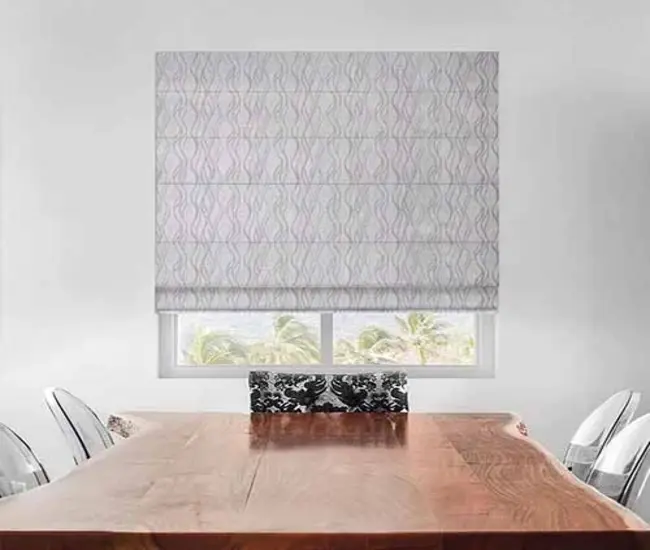Looking for energy efficient eco blinds that are made from certified eco-friendly green materials, like bamboo, jute, reed, or real wood sustainably harvested? Cellular shades, bamboo shades, solar roller shades, fabric roman shades, plantation shutters, hemp curtains, and organ cotton curtains are the 7 best eco blinds, shades, & alternatives.
Made in cooperation with nature, these eco blinds are chemical free with compostable and ultra-low emissions. They are a green, sustainable choice for modern ‘eco’ window fashions. One alternative is faux wood blinds made from recycled materials that are PVC free and are 100% recyclable themselves.
Here is all you need to know about the 7 best eco-friendly window coverings 2025 that not only reduce energy consumption and lower carbon emissions but can also help save money – a win for both you and the environment!
Read on to find out which one of them suits your needs and offers the best insulation value for your bedroom, living room, kitchen, or other space.
7 Best Eco-Friendly Window Coverings 2025
In today’s world, it is important to contribute to the efforts in reducing the effects of climate change.
Window coverings play a major role in maintaining comfortable temperatures within your homes and businesses. If you’re not careful with what kind of coverings you choose for them, your energy bills could skyrocket, making for an unsustainable living situation. Luckily, there are plenty of green options available that will provide all the insulation benefits without sacrificing style or comfort.
From natural fibers like jute or bamboo to recycled plastic materials such as microfiber polyester blends – these affordable window treatments offer fantastic performance while reducing the environmental impact.
You’ll feel the freshness and light radiating from the 7 best eco-friendly window coverings 2025.
Bamboo Blinds
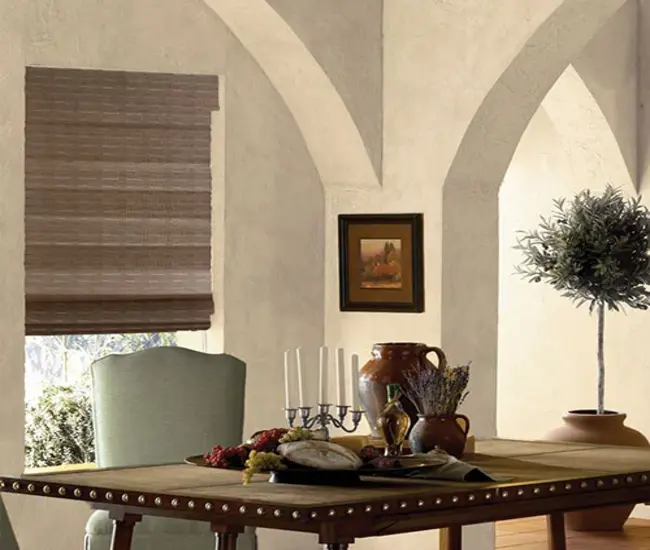
Bamboo blinds or woven wood shades are environmentally friendly window treatments that keep rooms warm in winter and cool in summer.
Pros
- Bamboo blinds are lightweight, strong, and sustainable.
- Bamboo is one of the world’s most sustainable crops.
- It requires no fertilization, no pesticides, and is incredibly self-regenerating.
- Bamboo plants can be harvested without damaging surrounding plant life.
Cons
- Bamboo blinds are prone to breaking, cracking, and splitting.
- They may not last as many years as some other window treatments.
Average Price Range
Cordless Woven Wood Bamboo Shades typically cost between $50 and $150 for windows ranging from 20” W x 24” H to 72” W x 72”.
Cellular Blinds
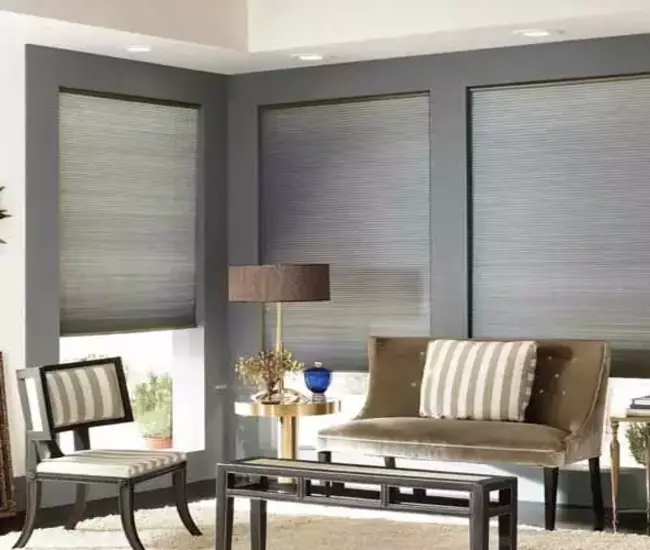
Cellular or honeycomb blinds insulate against sound and temperature fluctuations – plus they come in a variety of honeycomb-shaped cells!
Solar shades
Pros
- Cellular blinds reduce heat gain in summer and heat loss in winter.
- They are praised for their energy saving properties.
Cons
- Cellular shades can be a little more difficult to clean correctly.
- They are not eye-catching and flexible when it comes to light.
Average Price Range
The typical price range for eco-friendly Cordless Cellular Shades is $40 to $190 for windows ranging in sizes from 19” W x 24” H to 72” W x 84” H.
Roller Shades
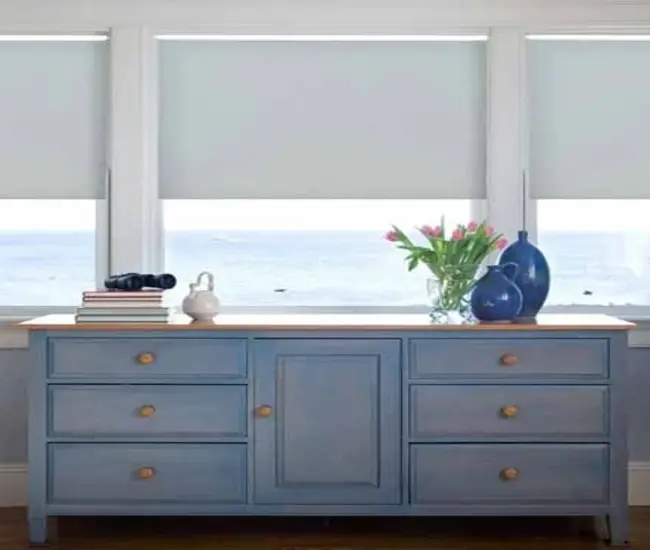
Roller shades provide plenty of design choices such as organic cotton, hemp/jute blend fabrics, recyclable types of vinyl, or PVC-free fabrics for the ultimate eco-friendly upgrade. Upgrade your windows today while giving off a stylish sustainable look!
Pros
- Lower environmental impact.
- Improve air quality.
- Boost your home’s energy efficiency.
Cons
- Unsuitable for very narrow windows.
- Flap in the breeze if the window is open.
Average Price Range
The typical price range for eco-friendly Roller Shades (sheer, light filtering, room darkening, & blackout) is $40 to $315 for windows ranging in sizes from 19” W x 24” H to 72” W x 84” H.
Natural Wool Blinds
Wool is a natural material that is a renewable and biodegradable material. It can be used to make blinds. Natural wool blinds for windows are a great option for those looking for an eco-friendly and stylish window treatment.
Pros
- Wool is an ideal renewable source of fiber for blinds and shades.
- Environmentally circular.
- When subject to biodegradation, wool quickly releases key nutrients back into the earth.
Cons
- Ice and snow can cause the wool to droop over your eyes.
- Susceptible to shedding.
Plantation Shutters
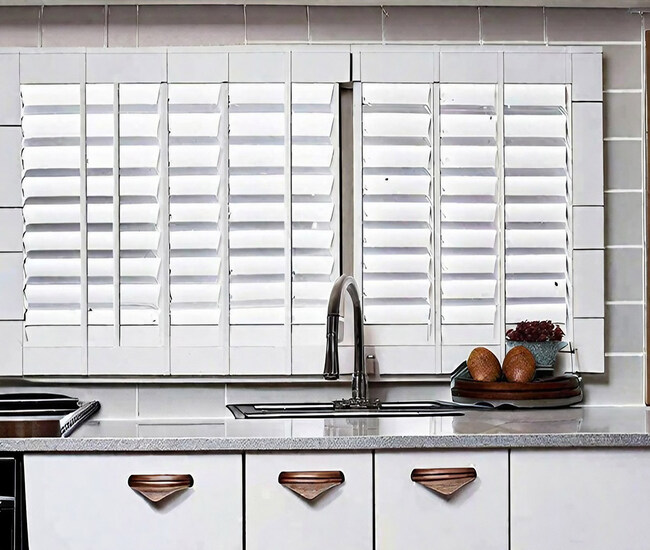
Plantation shutters are a long-lasting and energy-efficient window treatment option. These eco-friendly window coverings are made from sustainable materials such as wood, bamboo, or vinyl and can be customized to fit any window size.
Pros
- Incredibly durable.
- Can be recycled.
- Very sturdy and easy to clean.
- Great light filtration.
- Available in lots of styles.
Cons
- Improper installation can lead to light leakage and difficulty in opening and closing.
- Require proper maintenance to keep them looking their best.
Hemp Curtains
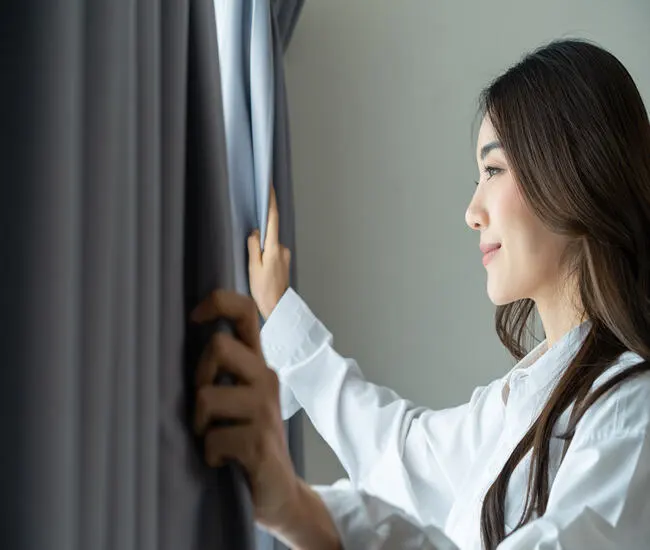
Hemp is a durable and eco-friendly material that you can use to make curtains for windows. Hemp curtains are a great choice for those homeowners who are looking for a natural and sustainable window covering option.
Pros
- One of the most sustainable fabrics.
- Lower production cost.
Cons
- Not as colorful and stylish as synthetic fabrics.
- Tends to wrinkle.
Organic Cotton Curtains
Organic cotton is grown without the use of harmful pesticides and other chemicals, making it a great eco-friendly option for window coverings. Organic cotton curtains for windows are also soft and breathable, making them a good choice for those with allergies.
Pros
- Cotton is biodegradable and organic fabric.
- Strong and absorbent.
- More decorative appeal.
Cons
- Susceptible to mildew and shrinks when washed for the first time.
- Cotton curtains wear more quickly when exposed to the sun.
Why Choose Eco-Friendly Window Coverings

Transforming your home into a haven of sustainability can be as simple as changing the window coverings. But why should you bother? Let’s explore the benefits of eco-friendly window treatments and discover how they will revolutionize both your space and your lifestyle.
Energy Conservation
The most obvious benefit is that these window coverings help conserve energy by reducing heat transfer indoors and outdoors, lowering utility bills.
It’s estimated that nearly one-third of a home’s energy is lost through windows, so making the switch to eco-friendly window coverings can have an immense impact on reducing your energy costs and carbon footprint.
Environmentally Friendly
They are made with materials that don’t require much water or chemicals to produce, making them safer for Mother Nature and our environment. Additionally, many green products come with more robust warranties than traditional options so you can rest assured knowing that if something goes wrong, it won’t cost an arm and a leg to replace.
Aesthetic Value
Not only do these sustainable window coverings promote a healthier planet but they also add aesthetic value to any room in the house.
Modern Designs and Vibrant Colors

With their modern designs and vibrant colors, eco-friendly treatments provide homeowners with stylish alternatives without sacrificing quality or performance.
Long Lasting
Furthermore, because these products generally last longer than conventional styles, you know your money is being well spent on something that will endure for years to come!
Measuring Instructions for Eco-Friendly Window Treatments
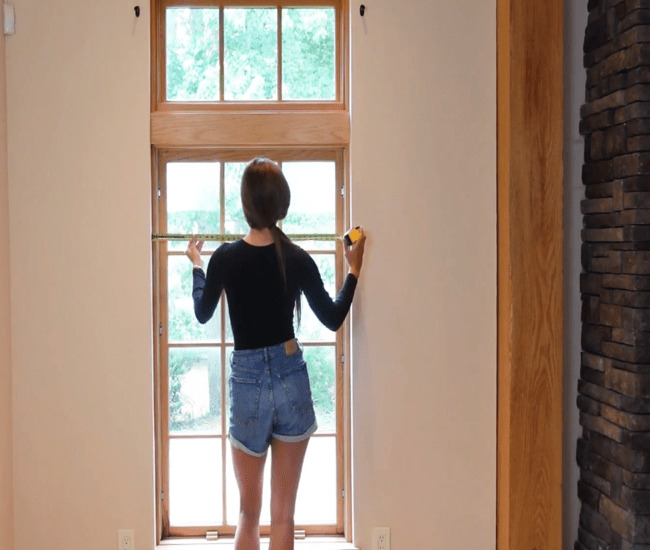
Here is our DIY step-by-step guide on how to measure windows for eco blinds to get started.
- Measure Width: Measure the width of the windows at top, middle, and bottom. Record the narrowest value.
- Measure Height: Measure the height of the top of the window or other space from the top to bottom in the left, middle, and right. Record the shortest measurement. For example, if the measurements are 61”, 61 ¾”, and 61 ¾”, order blinds measuring 61 inches in length.
- Deduction: Do not make any deductions. We’ll do it for you.
Installation Instructions
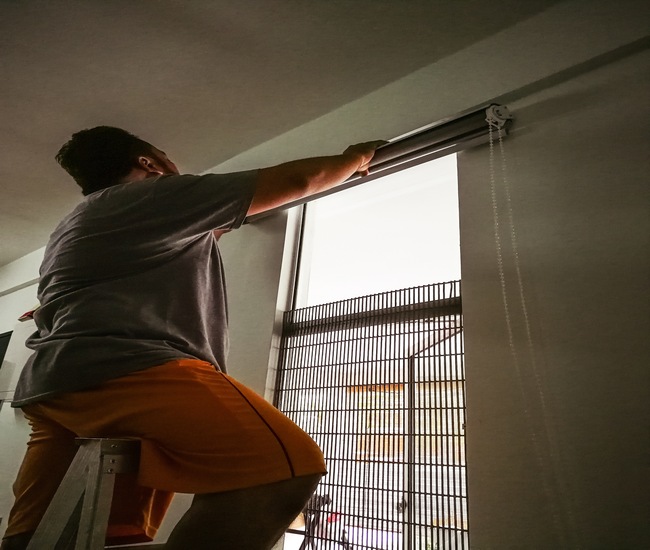
For a professional, inch-by-inch, edge-to-edge fit, follow DIY step-by-step guide on how to install eco-friendly window treatments.
- Step 1: Drill holes (using a ⅜-inch drill bit)
- Step 2: Set up the brackets with screws and a screwdriver.
- Step 3: Hang your window covers.
Note: Ensure that your chosen eco-friendly window treatment is correctly positioned on the window frame. Test their operation by raising, lowering, or adjusting them.
Conclusion
Our curated collection of the 7 best eco-friendly window coverings 2025 offers a great way to make your home more sustainable and energy efficient. Not only do they help reduce your carbon footprint, but they also come in a variety of attractive styles that can match your Decor and budget. From natural woven shades to insulating cellular blinds, these window covering options provide the perfect combination of style and sustainability.
If you’re ready to go green without sacrificing aesthetic appeal, it’s time to give eco-friendly window coverings a try.
Need More Help?
Still unsure which of the 7 eco-friendly window treatments will be best for your unique settings? Get in touch for further help now! Use 24/7 live chat or give us a call at (800) 863-6109 to contact our experts for custom solutions.
